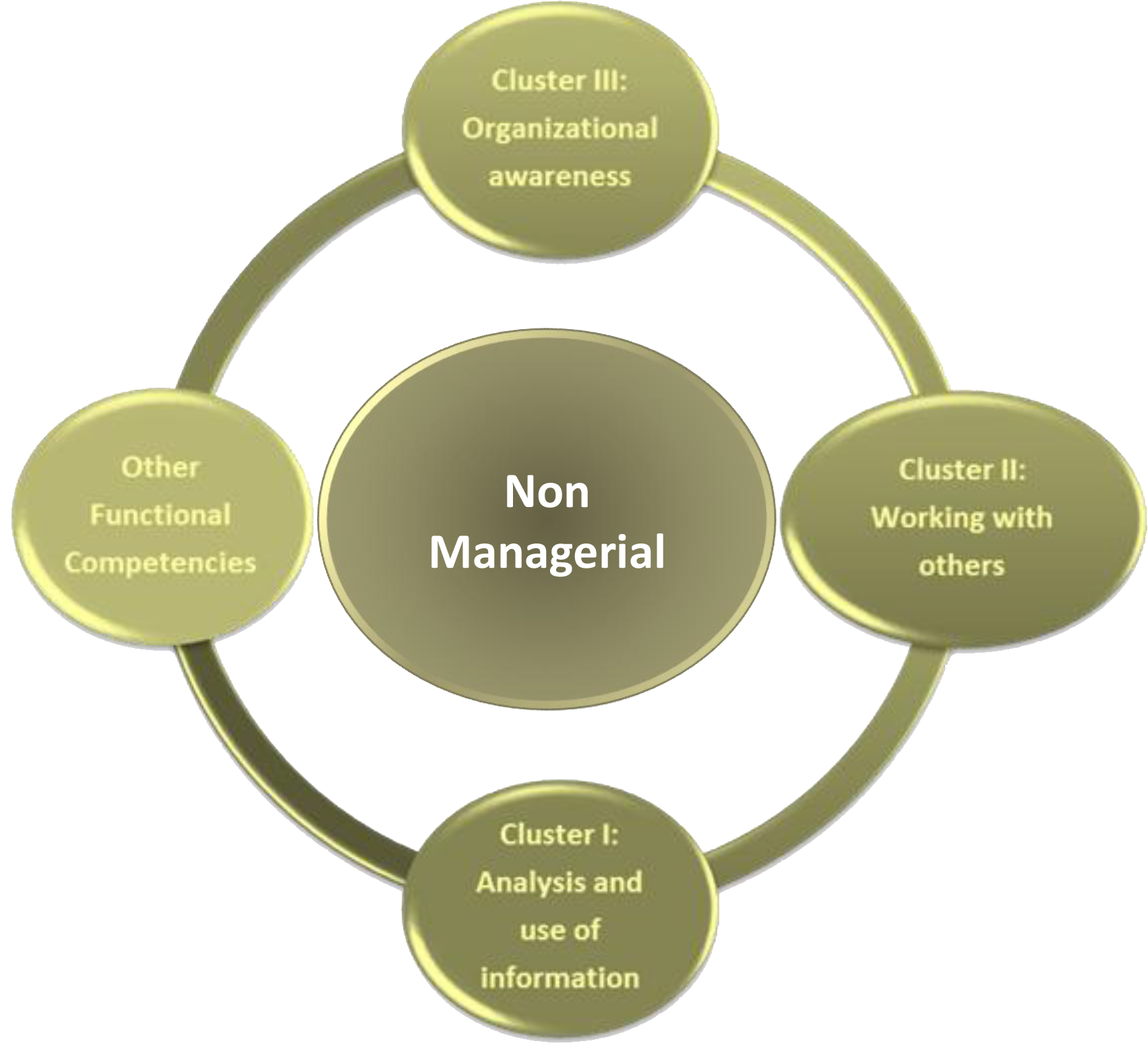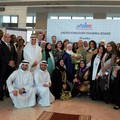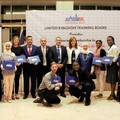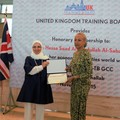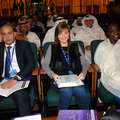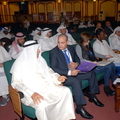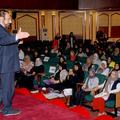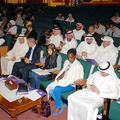UK-TB COMPETENCY MODEL
USING ISD-ADDIEModel
Prepared & Presented By: UK-TB Project Team
What is ISD?
ABBREVIATIONS.COM
Instructional Systems Design
Simply stated, this process provides a means for sound decision making to determine the what, why , when, where, who, and how of training.

What is a Competency?
Competency models refer to collections of knowledge, skills, abilities, and other characteristics (KSAOs) that are needed for effective performance in the jobs
FIRST,competency modeling is an important innovation in that it is a way to get organizations to pay attention to job-related information and employee skills in the management of employees. In fact, a key difference between job analysis and competency modeling may be that executives pay more attention to competency modeling. In that sense, competency modeling is a way to get job analysis into the mainstream of employee management decisions. Competency modeling could be considered the “Trojan Horse” for job analysis.
SECOND, they are often intended to distinguish top performers fromaverage performers
THIRD, they often include descriptions of how the competencies change or progress with employee level.
FOURTH, the KSAOs are usually linked to the business objectives and Strategies That is, the KSAOs are described in a manner that highlights their relationships to the work or the objectives, or sometimes the KSAOs needed to achieve each objective are identified and grouped together. In addition, they are usually defined in terms of observable job behavior
FIFTH, they are developed top down rather than bottom up like job analysis. They not only start with gathering information from executivesrather than lower level job employees like job analysis, but they usuallystart with defining the competencies for executive jobs and then work theirway down.
SIXTH, competency models may consider future job requirements either directly or indirectly
SEVENTH, competency models are usually presented in a manner that facilitates ease of use
EIGHTH, typically, a finite number of competencies are identified, andapplied across multiple functions or job families. Bounding the competency model in this way simplifies the human resource (HR) systems and facilitates comparisons across functions that support parity in systems like compensation and ease job movement across functions by illuminating similarities.
NINTH, and perhaps most importantly, competency models are used actively to align the HR systems
A TENTH difference is that competency modeling is often more of an organizational development intervention that seeks broad organizational change (such as HR alignment) as opposed to a simple data collection effort. Characterizing competency modeling as OD incorporates how the competency modeling project is conducted
The Use Of Competency Model
- Hire new employees by using assessments and other selection procedures that measure the competencies
- Train employees by creating courses aimed at the development of certain competencies
- Evaluate the performance of employees by structuring the appraisal instrument around the competencies
- Promote employees by using the competencies to establish promotion criteria
- Develop employee careers by using the competency models to guide the choice of job assignments and make other career choices
- Manage employee information by using the competency models to record and archive employee skill, training, and job experienceinformation
- Develop employee careers by using the competency models to guide the choice of job assignments and make other career choices
- Manage employee information by using the competency models to record and archive employee skill, training, and job experience information.
- Compensate employees by using the competency model to structure pay differences between jobs or to evaluate employees for pay increases
- Manage retention of critical skills and reduction-in-force activities through the identification and measurement of competencies tied to current and future organizational objectives
- Support organizational change efforts by developing broad systematic support of future-oriented competencies
What is the Objective of a Competency Model?
- Where competencies are instrumental factor in the delivery of the person’s desired outcome, having a profile of the person’s competencies will help in the best utilization of the person’s capabilities through the employment lifecycle.
-
- Reduce the risks of recruitment;
- Minimize the costs of selection;
- Recognize the potential in people
- Reduce staff turnover;
What is the Objective of a Competency Model?
- Improve productivity
- Manage effective performance
- Control succession planning
- Ensure a unified corporate identify of an organization, which ultimately leads to a homogenous working environment
- Cohesively link all the HR systems ensuring all HR Functions are well integrated; see diagram below
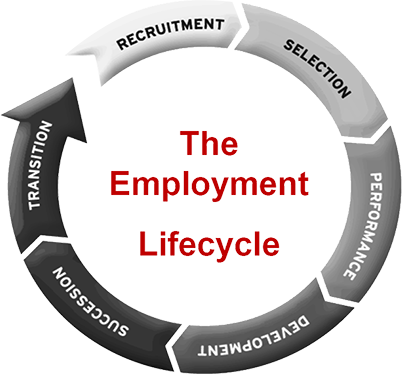
UK-TB COMPETENCY MODEL
This model is considered as the base of important human resource functions such as training and recruitment and hiring; to name a few. They specify what is essential to select for or to train and develop. Here, we propose a dynamic model that can be easily adapted to match the capabilities of a certain employee or a group of employees. This model considered all the previous competency factors in addition to certain group of competencies designed as per the levels considered in the organization. The model is dynamic in the sense that the “level of competency” can change directly as an output of any training based on a direct evaluation and feedback.
The model considers certain levels and building blocks (or groups). The levels are as follows:
- Level 1: Top Management
- Level 2: Mid Management
- Level 3: Non-Managerial
The building block or the groups of the competency model is designed as follows:
- Competency Group
- Competency Objectives
- Competency Definition
- Proficiency Levels
- Behavior/Value Indicator
Competency Framework Demonstration Level
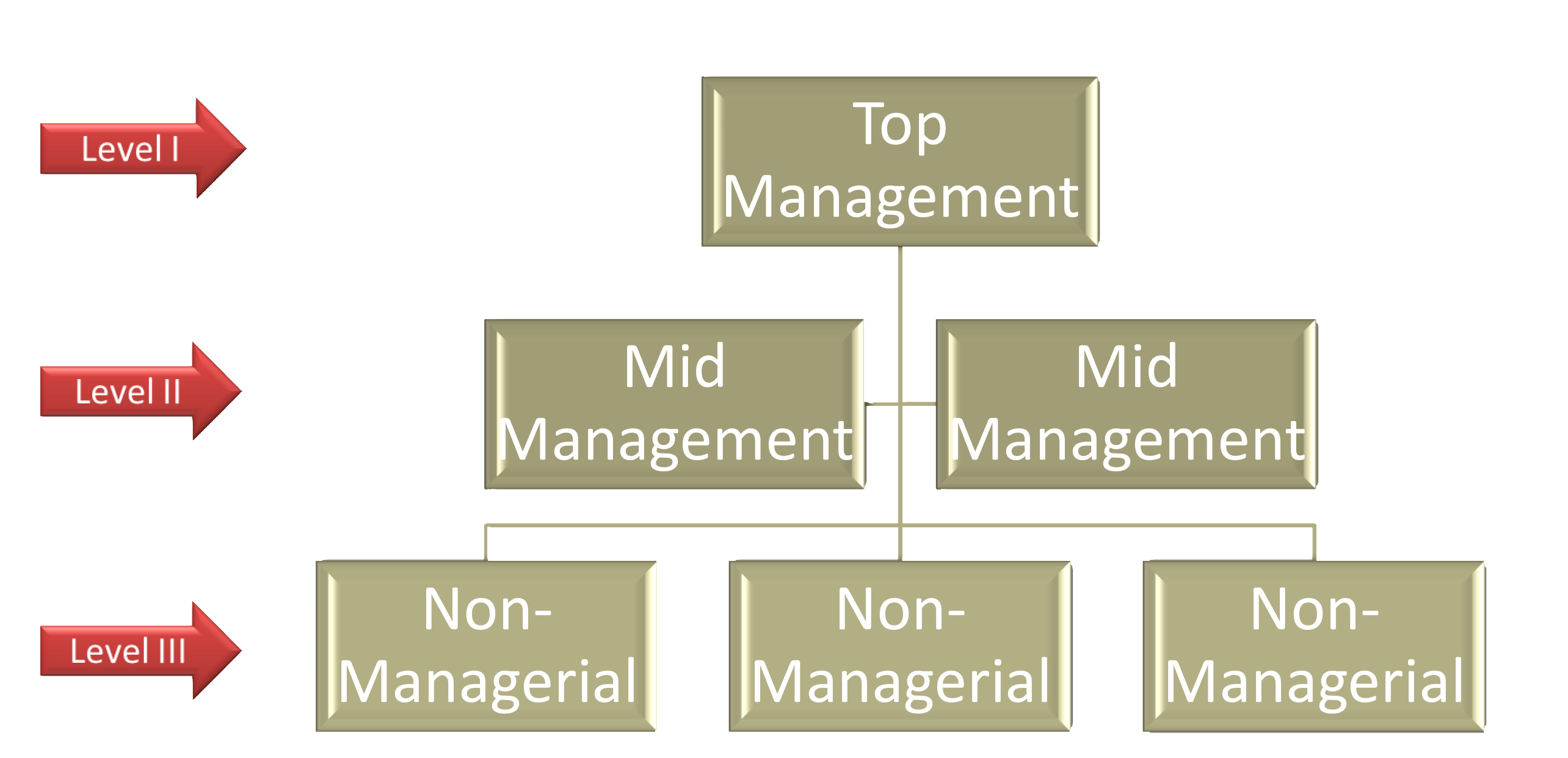
Competency Demonstration Levels
- The “Positive Indicators”Rating Guide is the tool used for performance evaluation against Competency Model, which outline 5 Levels of behavioral demonstration for each selected competency. Each level indicates the level of the subject competency demonstration from a complexity/sophistication stand point that is totally dependent on the Management Levels.
- Those levels are defined as ZERO, ONE, TWO, THREE and FOUR levels, following are the detailed definitions for each level;
-
- ZERO Does not display the behaviors that would support this competency
- ONE Displays a practical understanding of effective behaviors for this competency.
- TWO Displays impact for this competency by providing advice and guidance to others
- THREE Displays inspiration for this competency by role-modeling and influencing their environment
- FOUR Displays excellence and innovation for this competency and is seen as a role model to others
Evaluation
How do you evaluate using the “Positive Indicators Rating Guide”?
A Five-level scale is designed to be able to evaluate the subject competency fairly and objectively. The scale will indicate the behavior levels; (0- Weak) representing the low end of the scale and (4 - Very Strong) representing the high-end of the scale. See below table for details.
| 0 | Does not display the behaviors that would support this competency |
|---|---|
| 1 | Displays a practical understanding of effective behaviors for this competency |
| 2 | Displays impact for this competency by providing advice and guidance to others |
| 3 | Displays inspiration for this competency by role-modeling and influencing their environment |
| 4 | Displays excellence and innovation for this competency and is seen as a role model to others |
Levels Against above mentioned Scale
| Core Competency | Proficiency Level | ||
|---|---|---|---|
| %td Level 1: Top Management | Level 2: Mid Management | Level 3: Non Managerial | |
| Analysis & Use of information | 4 | 4 | 4 |
| Planning & Delivery of work | 4 | 4 | 3 |
| Decision making | 4 | 3 | NA |
| Working with others | 4 | 4 | 4 |
| Communicating with others | 4 | 4 | 3 |
| Influencing | 4 | 2 | 2 |
| Managing change | 4 | NA | 2 |
| Organizational awareness | 4 | 4 | 4 |
| Continual improvement | 4 | 4 | 3 |
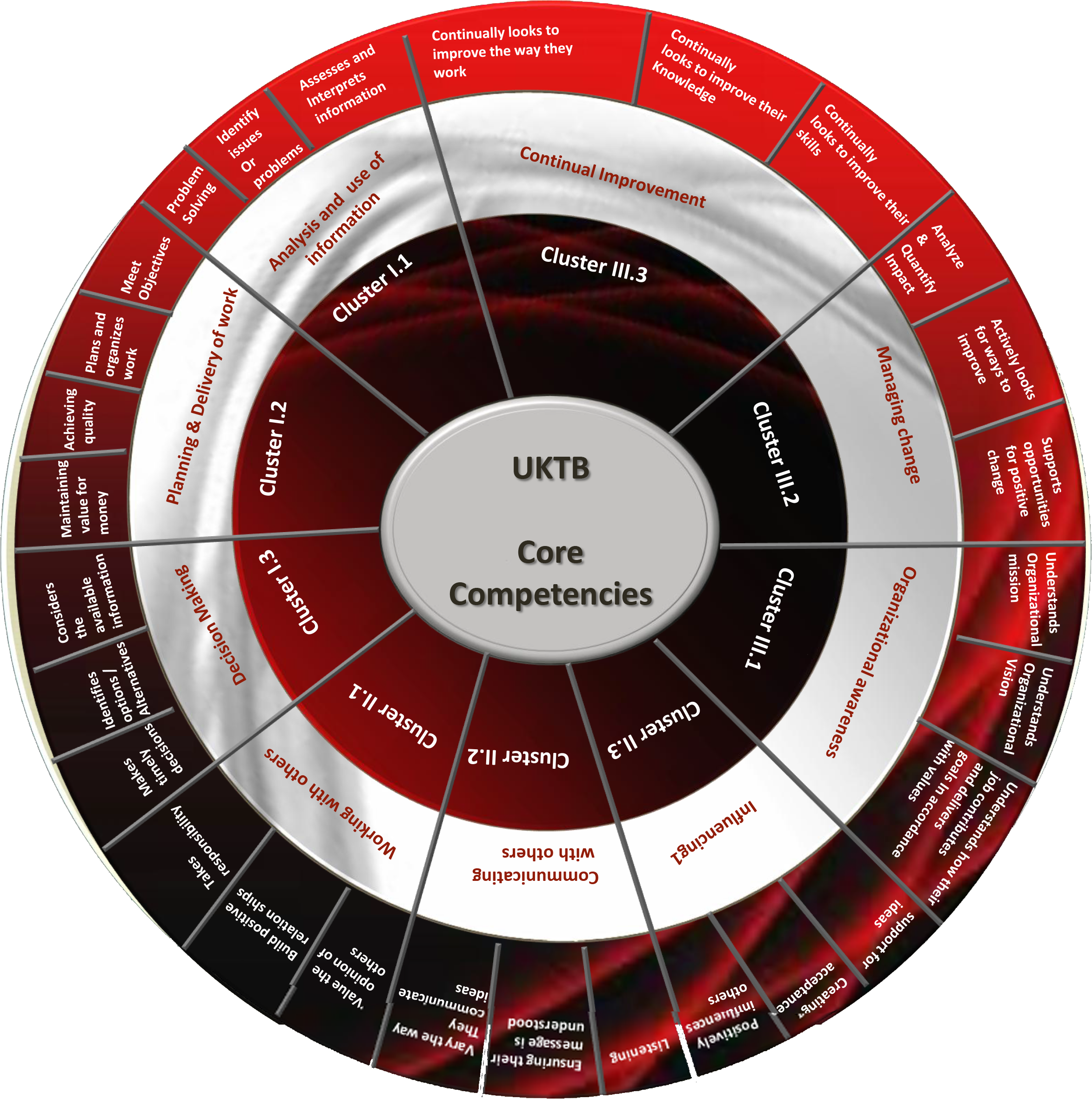
Top Management
|
Analysis & Use of information
Proficiency Level: 4 |
|
|---|---|
| Identifying and understanding issues, problems, and opportunities; comparing data from different sources to draw conclusions; using effective approaches for choosing a course of action or developing appropriate solutions; taking action that is consistent with available facts, constraints, and probable consequences | |
| Assesses and interprets information | Integrates information from a variety of sources, detects trends, associations, and cause-effect relationships. |
| Identify issues or problems | Recognizes issues, problems, categorize it and identify direct and indirect related impacts cause the problem. |
| Problem Solving | Efficiently and creatively solves the most complex problems taking into consideration the internal and external factors that may have caused it; Has insight into how things could be done better and recommends sound corrective actions; Identifies underlying or hidden problems and proactively works out a suitable solution |
|
Planning & Delivery of work
Proficiency Level: 4 |
|
|---|---|
| Sets activity plans, priorities actions effectively. Organizes resources systematically. Develops clear & systematic action plan. Revise plans to account for change and manages time effectively | |
| Plan and Organize work | Determines project/assignment requirements; identifying equipment, materials, and people needed; and coordinating with internal and external partners., Allocates appropriate amounts of time for completing own and others’ work; avoids scheduling conflicts; develops timelines and milestones, Takes advantage of available resources (individuals, processes, departments, and tools) to complete work efficiently |
| Meet Objectives | Ensures that the purpose and importance of the team are clarified (e.g., team has a clear charter or mission statement); guides the setting of specific and measurable team goals and objectives. |
| Achieving quality | Clearly assigns responsibility for tasks and decisions; sets clear objectives and measures; monitors process, progress, and results; designs feedback loops into work, Clearly communicates expectations and aspirations to groups and organizations and Adjusts quantitative and qualitative measures as needed to ensure appropriate feedback on priority goals and objectives |
| Maintaining value for money | Striking the best balance between the “three E’s” − economy, efficiency and effectiveness1 Effective and optimum use of resources and assessing cost effectiveness across the public sector. |
|
Decision Making
Proficiency Level: 4 |
|
|---|---|
| Making decisions and solving problems involving varied levels of complexity, ambiguity and risk, decision making can be categorized to [ Makes decisions based solely on rules, Makes decisions by interpreting rules, Makes decisions in situations where there is scope for interpretation of rules, Makes complex decisions in the absence of rules and Makes high-risk decisions in complex and ambiguous situations | |
| Considers the available information | Collect available information from multiple sources to resolve issues, assure that information are generally clear and adequate. |
| Identifies options / Alternatives | Pre-defined options using clear criteria/procedures, Identifies possible scenarios regarding outcomes of various options for action and conceder risk when identifying or recommending options. |
| Makes timely decisions | First to identify the time for problem closure, preparing and implementing action plan, Quickly sizes up multiple situations and complex problems and makes excellent timely decisions |
Management
|
Working with others
Proficiency Level: 4 |
|
|---|---|
|
is the ability to lead, coordinate or collaborate with others on work activities. We use this skill when we work as a member of a team or jointly with a partner (whether in person or at a distance), and when we engage in supervisory or leadership activities. The key achievement for working with others is to work as a member of a team or jointly with a partner and engaging in supervisory or leadership activities |
|
| Takes responsibility | Accepts full responsibility for self and contribution as a team member; displays honesty and truthfulness; confronts problems quickly; displays a strong commitment to organizational success and inspires others to commit to goals; demonstrates a commitment to delivering on his/her public duty and presenting oneself as a credible representative of the Agency and State to maintain the public’s trust |
| Build positive relation ships | Provides assistance, information, or other support to others, to build or maintain relationships with them |
| Value the opinion of others | Showing respect for others’ opinions and working toward mutually agreeable solutions. innovative approaches within the department or across the agency by acting as an opinion leader whom others emulate Helps other team members embrace the value of considering and honoring different opinions, styles, and ways of working |
|
Communicating with others
Proficiency Level: 4 |
|
|---|---|
| Convey sensitive/strategic information diplomatically and in a positive manner; Gives appropriate responses to unexpected questions in one-on-one and group sessions; Encourage others to openly communicate thoughts and ideas; Skillful in understanding others and tailoring communication to the situation. | |
| Vary the way they communicate ideas | Communicates ideas with others who have a diversity of cultural and demographic backgrounds. The ability to develop and communicate ideas in support of the business’ new ideas |
| Ensuring their message is understood | Speaks clearly and can be easily understood Summarizes or paraphrases his/her understanding of what others have said to verify understanding and prevent miscommunication |
| Listening | Clearly conveys and receives information and ideas through a variety of media to individuals or groups in a manner that engages the listener, helps them understand and retain the message, and invites response and feedback. Keeps others informed as appropriate by listening to them carefully 1st. Demonstrates good written, oral, and listening skills |
|
Influencing
Proficiency Level: 2 |
|
|---|---|
| Demonstrates the ability to effectively persuade others to listen, commit, and act on a new approach. Thoroughly considers all possibilities and weighs the risks and benefits prior to convincing others. Gains support from others without relying on authority, position or intimidation. | |
| Positively influences others | Understands how an organization must change in light of internal and external trends and influences Committed to course of action to achieve long-range goals and influences others to translate vision into action. |
| Creating acceptance | Facilitates the implementation and acceptance of change within the workplace Uses appropriate interpersonal skills and techniques to gain acceptance for ideas or solutions. |
| support for ideas | Communicates ideas with others who have a diversity of cultural and demographic backgrounds. The ability to develop and communicate ideas in support of the business’ new ideas |
Non Managerial
|
Organizational awareness
Proficiency Level: 2 |
|
|---|---|
| level of understanding for both the organization and its leaders regarding current capacity, abilities, potential, and results. Leader-directed, positive change is not about direction but transformation. The degree of organizational awareness is the single most determining factor in managing effective change | |
| Understands how their job contributes and delivers goals in accordance with values | Encourages a sense of mutual accountability in team settings that motivates individuals to do his/her best for each other and exceed goals inspires others to commit to goals; |
| Understands Organizational Vision | Creating a compelling vision and developing the strategies to achieve it, Understand the larger sense of organizational purpose and Understanding the ambitious view of the future that everyone in the organization can believe in, one that can be realistically achieved, yet offers a future that is better in important ways than what now exists. |
| Understands Organizational mission | Keeps the organization’s mission, vision, and values at the forefront of employee decision making and actions; ensures alignment of organization’s strategic plan and agency practices with vision, mission and values. |
|
Managing Change
Proficiency Level: 2 |
|
|---|---|
| .The ability to involve those who are most affected by the change in the planning and implementation process; clearly communicate the purpose, vision, roles, responsibilities, and implementation schedule to those involved. To readily share information with others and be available to address concerns or answer questions; to communicate both the gains and losses which accompany a change. To anticipate resistance to change and demonstrate a willingness to deal with it as a problem to be solved rather than a personality flaw; creating transition plans to proactively manage change. To actively monitor the change process through two-way communication with others; developing ways to reward those who accept change management as a basic part of their job. | |
| Supports opportunities for positive change | Persistently challenges the status quo to identify areas for improvement others have overlooked; Exhibits courage in smart risk taking even when his/her position is unpopular. Develops creative and highly effective ways of doing work to enhance efficiency and quality of work/services provided by the State Consistently gains active involvement of relevant stakeholders to ensure ideas are refined and fully adoptable by the State Energizes others to generate support within the workforce for changes that enhance efficiency or the quality of work products Generates support among co-workers for even the most controversial ideas and concepts Manages change exceptionally well, exceeding implementation requirements and providing the opportunity to exceed expectations on other objectives Coaches others in techniques for evaluating change initiatives within the State; helps other define and track success |
| Actively looks for ways to improve | Persistently challenges to identify areas for improvement others |
| Analyze & Quantify Impact | Recognizes that work processes and/or outcomes are negatively impacting the customer; owns the issue and takes action to address deficiencies by identifying resolutions and notifying the appropriate State/agency leader. Understands and takes into account global and local impacts on day to-day activities Structures situations like the setting, persons present, sequence of events to create a desired impact and to maximize the chances of a favorable outcome |
|
Continual Improvement
Proficiency Level: 3 |
|
|---|---|
| Regularly analyzes systems, processes and performance trends to identify opportunities for improvement. Provides others with tools and approaches to solve problems and improve process. Willing to seek opportunities for continuous improvement. Delighted in acquiring new knowledge. | |
| Continually looks to improve their skills | Takes significant action to develop skills needed for effective news in current or future job Applies influence skills to gain support for even the most controversial issues |
| Continually looks to improve their Knowledge | Show determination to pursue new knowledge or skill, even when finding it or mastering it proves more difficult than expected Shares new knowledge regarding professional standards with others to ensure they are able to contribute new ideas to the State |
| Continually looks to improve the way they work | Provides feedback to team members, even peers and more senior co-workers, on tasks he/she can do well to improve overall team performance |
Level 1: Top Management Competencies profile
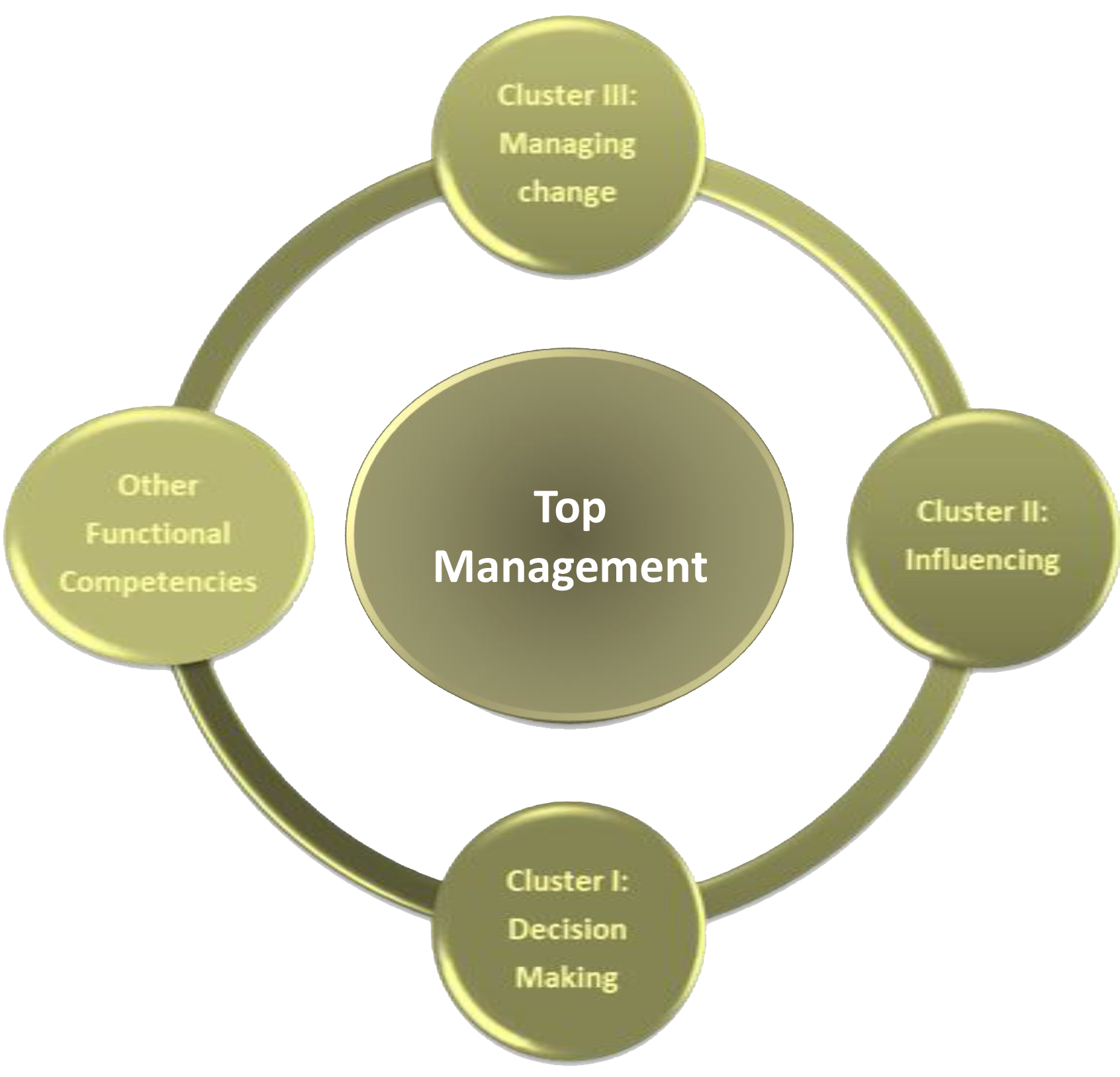
Level 2: Mid Management Competencies profile
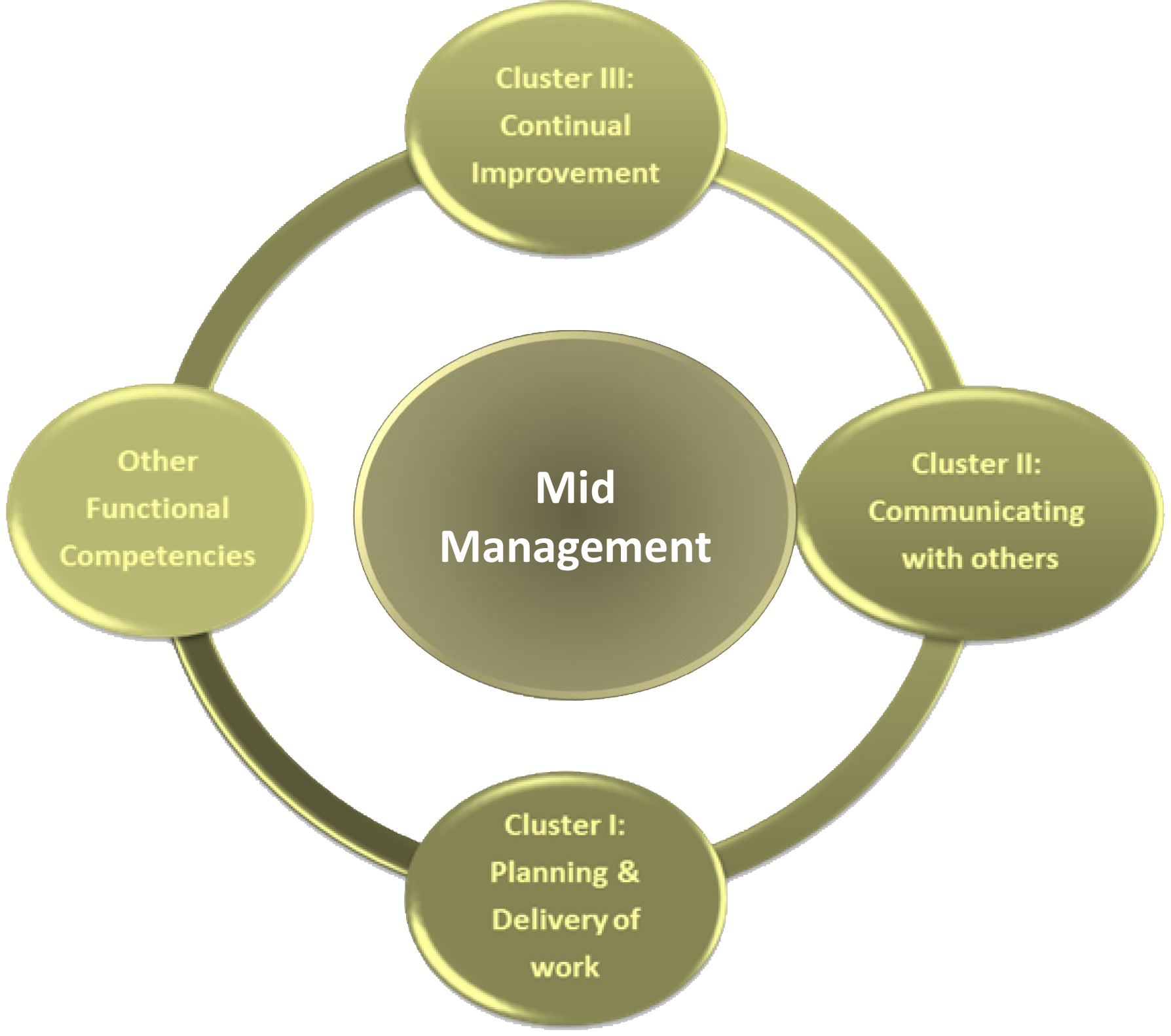
Level 3: Non Managerial Competencies profile
